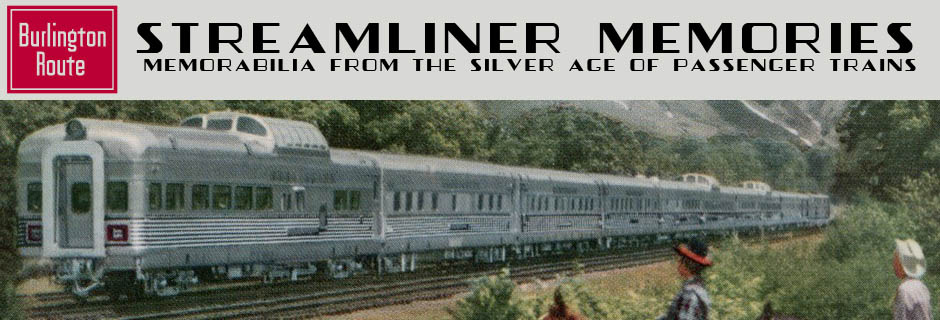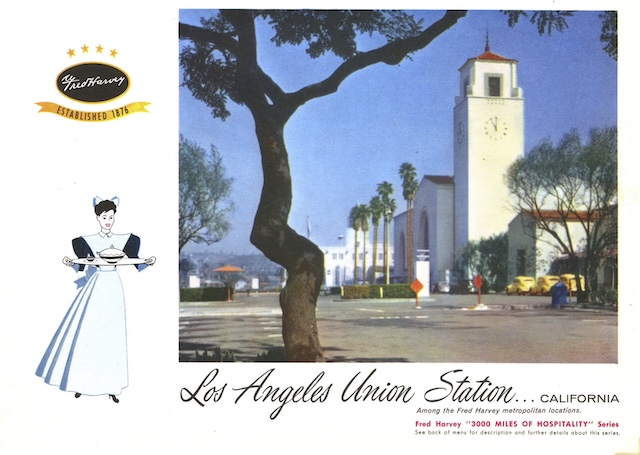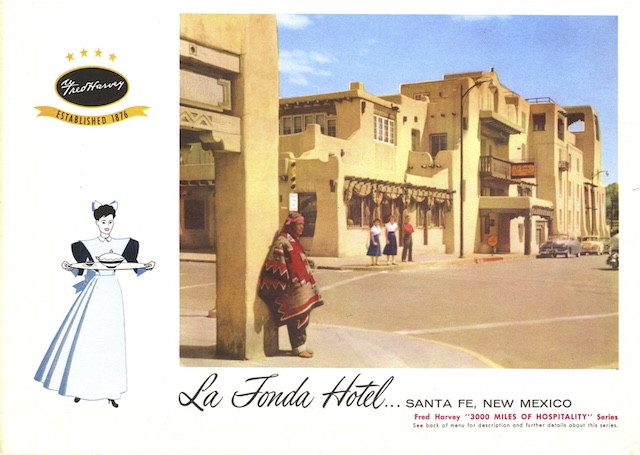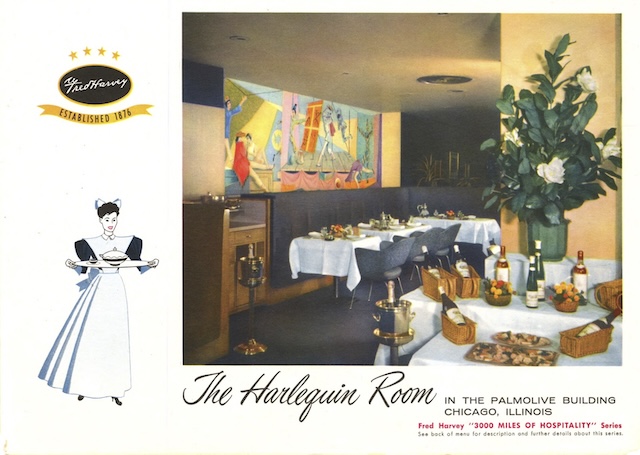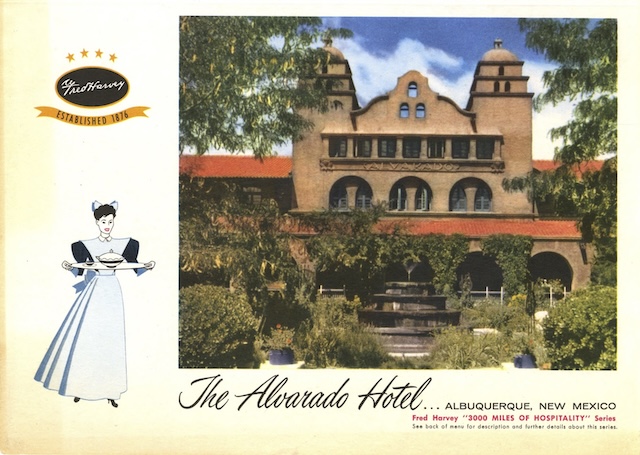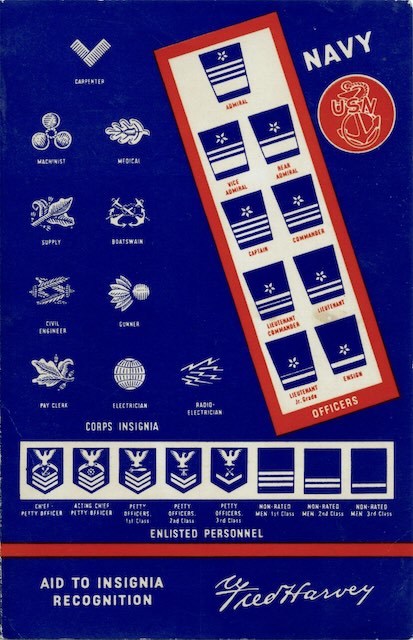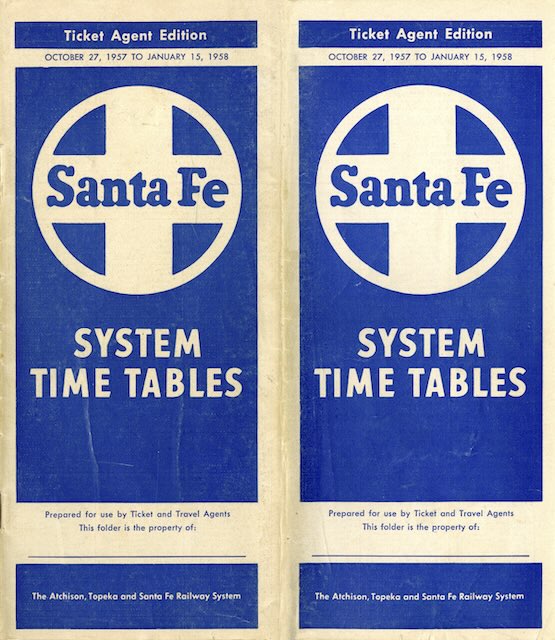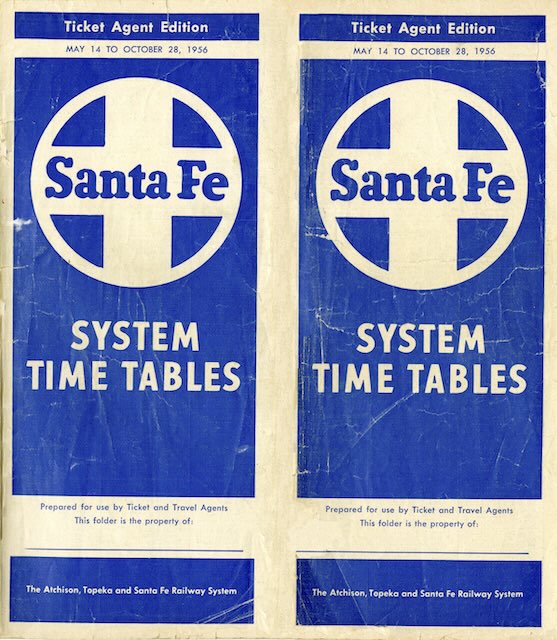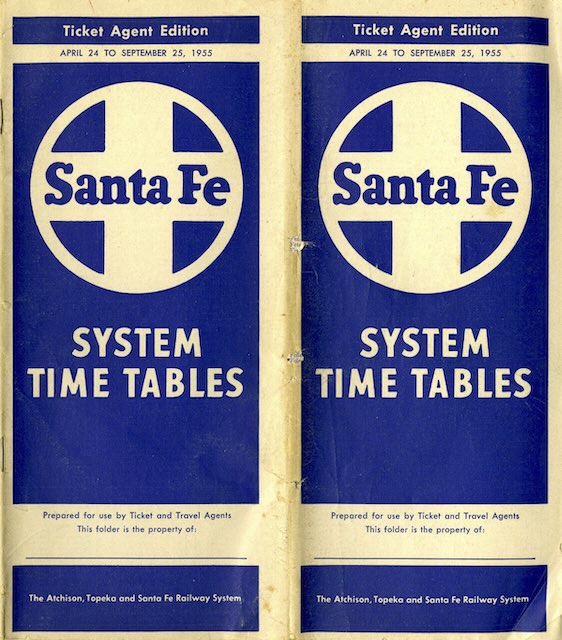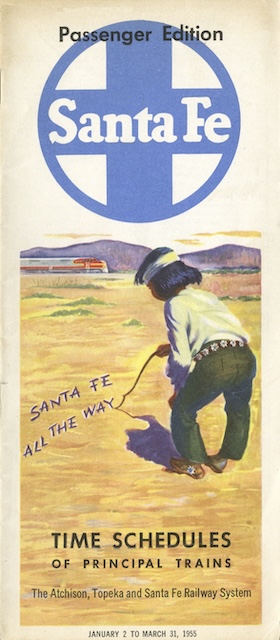In an effort to keep its restaurant mix current with the times, Fred Harvey began operating the Old Spinning Wheel, a popular restaurant in Hinsdale, a suburb of Chicago, in 1954. The photo on the cover of this menu doesn’t show it, but the 500-seat restaurant featured a rustic design filled with antiques including, as the name suggests, an old spinning wheel.
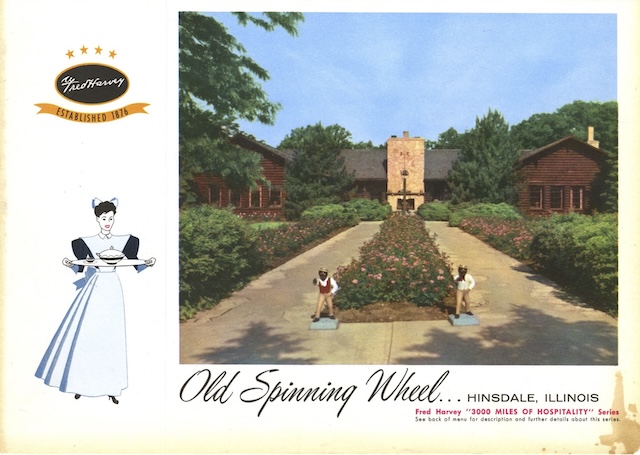 Click image to download a 540-KB PDF of this menu.
Click image to download a 540-KB PDF of this menu.
The restaurant had been started in 1935 by Charles and Vacia Duncan, who opened a larger version on 20 acres of gardens in 1942. The years 1935 and 1942 don’t sound like auspicious times to open or expand a restaurant, but their formula was so successful that by 1952 it was considered one of the 50 most popular restaurants in the U.S. When the Duncan’s retired in 1954, they leased it to Fred Harvey, who used menus like this one to make people outside of the western Chicago suburbs aware of the location. Continue reading
